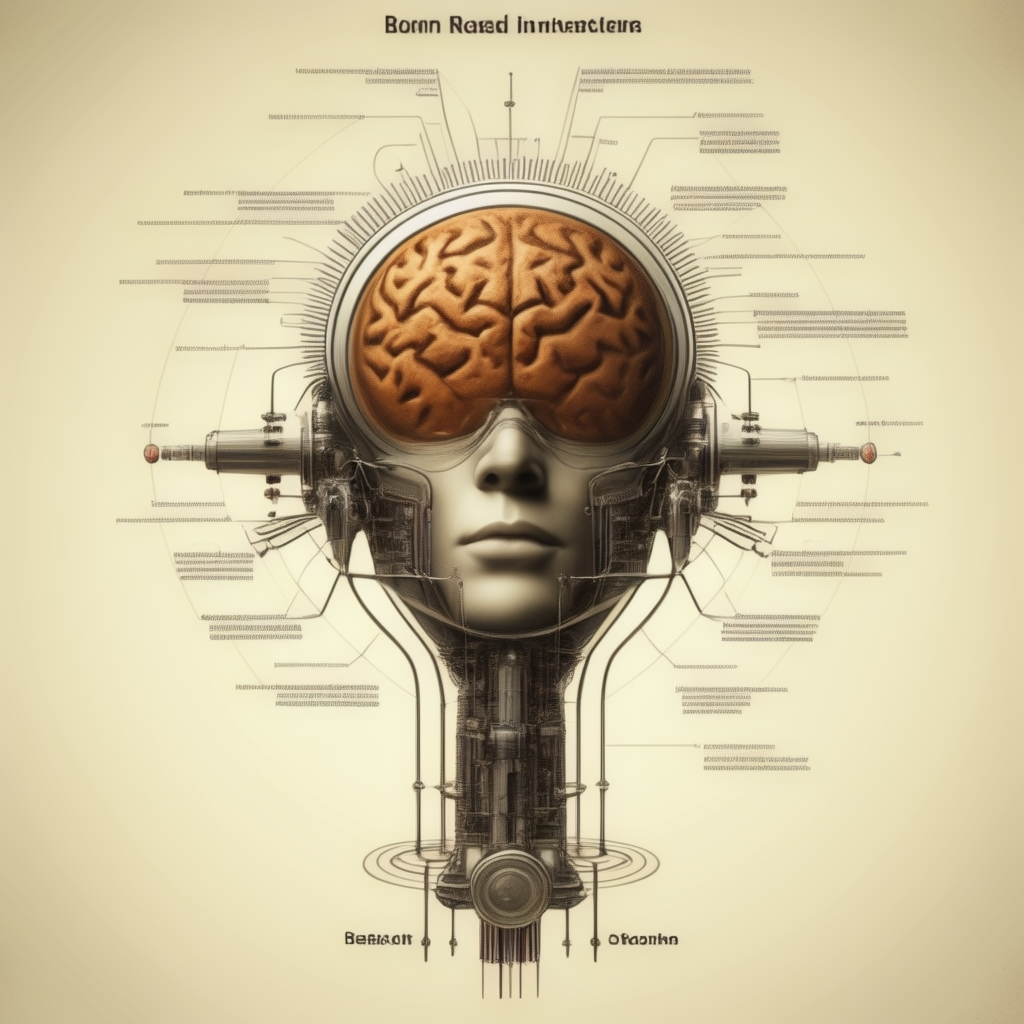Understanding the Billion-Parameter Models: How AI/ML Systems Like ChatGPT Are Built
Artificial Intelligence (AI) and Machine Learning (ML) have seen incredible advancements in recent years, particularly with the development of models like ChatGPT. These models are often described as being trained on “billions of parameters.” But what exactly are these parameters? How are they collected, and what role do they play in the functioning of these models? Additionally, what is fine-tuning in AI/ML, and how does it relate to these parameters? In this detailed blog post, we will explore these questions and dive deep into the world of AI/ML model training.
What Are Parameters in AI/ML Models?
1. Defining Parameters:
- In the context of AI/ML models, especially deep learning models like ChatGPT, parameters are the variables that the model learns during the training process. These parameters are essentially the weights and biases within the neural network. They are numerical values that influence how the input data is transformed into the output predictions. In simpler terms, parameters are the knobs and dials that the model adjusts to improve its accuracy in making predictions or generating responses.
2. Role of Parameters in Neural Networks:
- Neural networks are the backbone of models like ChatGPT. A neural network is composed of layers of interconnected nodes (neurons), where each connection between nodes has a weight (a parameter). During training, the model learns by adjusting these weights in r . The goal is to minimize the difference between the model’s predictions and the actual outcomes. The billions of parameters in large models allow them to capture complex patterns and relationships within the data.
3. How Parameters Are Collected:
- Parameters are not collected in the traditional sense; rather, they are learned during the training process. The model starts with randomly initialized parameters. As it processes the training data, it adjusts these parameters using optimization techniques like gradient descent. This process is repeated iteratively across massive datasets until the model converges on a set of parameters that yield the best performance.
The Role and Importance of Parameters
1. Capturing Complexity:
- The sheer number of parameters in models like ChatGPT allows them to capture intricate patterns in data. For example, in natural language processing (NLP), these parameters help the model understand syntax, semantics, context, and even nuances like sarcasm or tone. The more parameters a model has, the more detailed and refined its understanding can be, leading to more accurate and sophisticated outputs.
2. Generalization:
- Parameters are crucial for the model’s ability to generalize from the training data to new, unseen data. A well-trained model with billions of parameters can make accurate predictions or generate relevant responses even for inputs that it has never encountered before. This ability to generalize is what makes AI models like ChatGPT so powerful in real-world applications.
3. Balancing Performance and Efficiency:
- While having a large number of parameters increases a model’s capacity to learn, it also comes with challenges. More parameters mean more computational resources are required for training and inference. Therefore, AI/ML researchers work to strike a balance between having enough parameters to capture the necessary complexity and maintaining the model’s efficiency.
What Is Fine-Tuning in AI/ML Models?
1. The Concept of Fine-Tuning:
- Fine-tuning is a process used in AI/ML where a pre-trained model is further trained on a specific task or dataset to improve its performance in that area. The pre-trained model has already learned a general set of parameters from a large, diverse dataset. Fine-tuning adjusts these parameters slightly to better suit the specific requirements of a particular application.
2. How Fine-Tuning Works:
- During fine-tuning, the model is exposed to new data that is relevant to the specific task at hand. The parameters are adjusted based on this new data, but the adjustments are typically small, as the model already has a good general understanding from its initial training. This allows the model to adapt to new tasks without needing to be trained from scratch, saving time and computational resources.
3. Examples of Fine-Tuning:
- A common example of fine-tuning is in NLP models like ChatGPT. After being pre-trained on a vast corpus of text, the model can be fine-tuned on specific datasets to specialize in tasks like sentiment analysis, customer support, or legal document review. Fine-tuning allows the model to perform exceptionally well in these areas by honing in on the particular nuances and requirements of the task.
Operations Involved in Building and Training AI/ML Models
1. Data Collection and Preprocessing:
- The first step in building an AI/ML model is gathering a large and diverse dataset. For models like ChatGPT, this often involves scraping text from various sources, including books, websites, articles, and more. The data is then preprocessed to clean it up, remove noise, and ensure it is in a suitable format for training.
2. Model Architecture Design:
- The architecture of the neural network is designed based on the task the model is intended to perform. This involves deciding on the number of layers, the type of layers (e.g., convolutional, recurrent, transformer), and how they are connected. The architecture influences how the model processes information and how many parameters it will have.
3. Training the Model:
- During training, the model is fed input data, and the output is compared to the expected results. The difference, or error, is calculated, and the model’s parameters (weights and biases) are adjusted to minimize this error. This process is repeated for many iterations across the dataset, gradually refining the parameters. Techniques like backpropagation and gradient descent are used to optimize the parameters.
4. Regularization and Hyperparameter Tuning:
- To prevent the model from overfitting (i.e., performing well on training data but poorly on new data), techniques like regularization are used. Hyperparameters, which are settings that govern the training process (e.g., learning rate, batch size), are also tuned to improve performance. This tuning often involves experimentation to find the best combination of hyperparameters.
5. Model Evaluation and Testing:
- After training, the model is evaluated on a separate test dataset to assess its performance. Metrics like accuracy, precision, recall, and F1 score are used to quantify how well the model is performing. If necessary, the model may be fine-tuned or retrained to improve these metrics.
6. Deployment and Inference:
- Once the model is trained and fine-tuned, it is deployed for real-world use. Inference is the process of using the trained model to make predictions or generate outputs based on new input data. The model’s parameters, which have been optimized during training, are now used to process this new data efficiently.
The Evolution and Significance of Parameters in AI/ML Models
1. The Historical Context of Parameters in AI/ML:
- The concept of parameters in AI/ML models has evolved significantly over time. Early machine learning models, such as linear regression or decision trees, had relatively few parameters. These models were limited in their ability to capture complex patterns. As computational power and data availability increased, researchers developed more sophisticated models, such as deep neural networks, which required and benefited from a much larger number of parameters. This shift marked a significant milestone in AI/ML, enabling the creation of models capable of understanding and generating human-like text, speech, and images.
2. Scale and Impact of Billions of Parameters:
- The transition to models with billions of parameters represents a leap in scale and capability. For example, GPT-3, one of the most well-known large language models, has 175 billion parameters. This massive scale allows the model to generate highly coherent and contextually relevant text across a wide range of topics. The sheer number of parameters enables the model to store a vast amount of knowledge, essentially functioning as a sophisticated, probabilistic database that can generate responses based on the likelihood of certain word sequences.
3. The Role of Non-Linearity in Parameters:
- Non-linearity is a critical aspect of modern AI/ML models, particularly in deep learning. Parameters are involved in defining the non-linear transformations that the model applies to the input data. These non-linearities are introduced through activation functions (e.g., ReLU, sigmoid, tanh), which allow the model to capture complex relationships that linear models cannot. The interaction of parameters with these non-linear functions is what enables deep neural networks to model intricate patterns in data, such as understanding the context of a conversation or identifying objects in an image.
4. Parameter Initialization and Its Importance:
- The initial values of parameters play a crucial role in the training process. Poor initialization can lead to problems such as vanishing or exploding gradients, where the model either fails to learn or learns too slowly. To mitigate this, researchers have developed advanced initialization techniques, such as Xavier initialization or He initialization, which help ensure that the model starts training with a reasonable set of parameters. This careful initialization is particularly important in models with billions of parameters, where even small inefficiencies can accumulate, leading to suboptimal performance.
5. The Role of Parameters in Transfer Learning:
- Transfer learning is a technique where a model trained on one task is adapted for another, often related, task. Parameters play a central role in this process. In transfer learning, the parameters of a pre-trained model (often trained on a large, diverse dataset) are fine-tuned on a smaller, task-specific dataset. This approach leverages the knowledge embedded in the parameters from the initial training, allowing the model to perform well on the new task with relatively little additional data. Transfer learning has become a key strategy in AI/ML, enabling the development of specialized models without the need for extensive retraining.
6. The Role of Gradient Descent in Parameter Optimization:
- Gradient descent is the algorithm most commonly used to optimize parameters during training. The idea is to adjust the parameters in the direction that reduces the loss function, which measures the difference between the model’s predictions and the actual outcomes. In practice, variants like stochastic gradient descent (SGD) and Adam are used to efficiently update the billions of parameters in modern models. Gradient descent ensures that the model gradually converges on a set of parameters that minimizes the error, allowing it to make accurate predictions.
7. Regularization Techniques and Parameter Management:
- Regularization techniques are essential for managing the complexity of models with billions of parameters. Without regularization, a model might overfit the training data, meaning it performs well on seen data but poorly on unseen data. Techniques such as L1/L2 regularization, dropout, and early stopping are used to penalize overly complex models, encouraging them to generalize better. These techniques adjust or constrain the parameters to prevent the model from learning noise or irrelevant patterns in the data.
Fine-Tuning: A Deeper Dive into Customizing AI/ML Models
1. The Strategy Behind Fine-Tuning:
- Fine-tuning is not just about adjusting parameters; it involves a strategic approach to model adaptation. During fine-tuning, the model’s parameters are updated in a way that balances between preserving the knowledge gained during pre-training and adapting to the new task-specific data. This often involves careful selection of hyperparameters, such as learning rate, to ensure that the model does not overfit to the new data or forget the general knowledge it has acquired.
2. Layer-Wise Fine-Tuning:
- In large models, not all layers are equally important for a given task. Layer-wise fine-tuning involves selectively updating parameters in certain layers of the neural network. For instance, the early layers of a model, which capture more general features, may be frozen, while the later layers, which capture more specific features, are fine-tuned. This approach is particularly useful in transfer learning scenarios where the pre-trained model is adapted for a specific domain or task.
3. The Role of Fine-Tuning in Model Specialization:
- Fine-tuning allows a general-purpose model to be specialized for specific applications. For example, a pre-trained language model can be fine-tuned to excel in medical text analysis, legal document review, or customer service. The fine-tuning process adjusts the parameters to reflect the specific vocabulary, style, and nuances of the domain, making the model more effective in that particular context.
4. Challenges and Considerations in Fine-Tuning:
- Fine-tuning comes with its own set of challenges. One major issue is catastrophic forgetting, where the model loses its ability to perform the original task after being fine-tuned on a new task. Researchers address this by using techniques such as elastic weight consolidation (EWC) or learning rate schedules that prevent drastic changes to critical parameters. Another challenge is determining the optimal amount of data for fine-tuning; too little data may not be sufficient to adapt the model, while too much may lead to overfitting.
Beyond Parameters: The Future of AI/ML Model Development
1. The Move Toward Parameter Efficiency:
- As AI/ML models grow in size, there is a growing interest in making them more parameter-efficient. Research is being conducted on techniques like pruning, where unnecessary parameters are removed, and quantization, where parameters are represented with fewer bits. These techniques aim to reduce the computational resources required for training and inference without sacrificing performance.
2. The Role of Meta-Learning:
- Meta-learning, or learning to learn, is an emerging field where models are trained to optimize their learning process itself. In meta-learning, the model’s parameters are adjusted not just for a specific task but to improve the model’s ability to learn new tasks quickly. This approach holds the potential to make models more adaptable and efficient, reducing the need for extensive fine-tuning for each new application.
3. Ethical Considerations in Parameter Optimization:
- The development of models with billions of parameters raises ethical considerations, particularly in terms of energy consumption and environmental impact. Training large models requires significant computational resources, which in turn consume a lot of energy. Researchers are exploring ways to optimize training processes to be more energy-efficient, as well as considering the societal implications of deploying these powerful models.
4. The Evolution of Parameter-Based AI Models:
- The evolution of parameter-based AI models is ongoing, with continuous improvements in training algorithms, model architectures, and optimization techniques. The future may see even larger models with trillions of parameters or entirely new approaches that make better use of the parameters available. These advancements will likely lead to even more sophisticated AI systems capable of performing tasks that are currently beyond reach.
Conclusion: The Intricacies of Parameters in AI/ML Models
The billions of parameters in models like ChatGPT represent the culmination of decades of research and development in AI/ML. These parameters are the foundation upon which the model’s ability to understand, generate, and interact with human language is built. Through careful optimization, fine-tuning, and ongoing research, these models are continually being improved to better meet the needs of various applications.
As AI/ML continues to advance, understanding the role of parameters will remain critical. Whether in the context of building more efficient models, adapting models for specific tasks, or exploring new avenues of AI research, parameters will continue to be a key focus area. By delving into the intricacies of parameter optimization and fine-tuning, we gain a deeper appreciation for the complexity and power of modern AI/ML systems.
Conclusion: The Power of Parameters in AI/ML
The billions of parameters in models like ChatGPT are the key to their power and versatility. These parameters allow the model to learn from vast amounts of data, capturing complex patterns and making sophisticated predictions. The process of training these models involves careful design, optimization, and fine-tuning to ensure that they perform well across a range of tasks. While AI/ML is inspired by human intelligence, it operates on a fundamentally different level, with parameters driving its ability to process information quickly and accurately.
Understanding the role of parameters and the operations involved in training AI/ML models provides insight into how these technologies work and why they have become such an integral part of modern computing. As AI/ML continues to evolve, the complexity and capabilities of these models are likely to increase, driven by advances in how we manage and optimize these billions of parameters.






